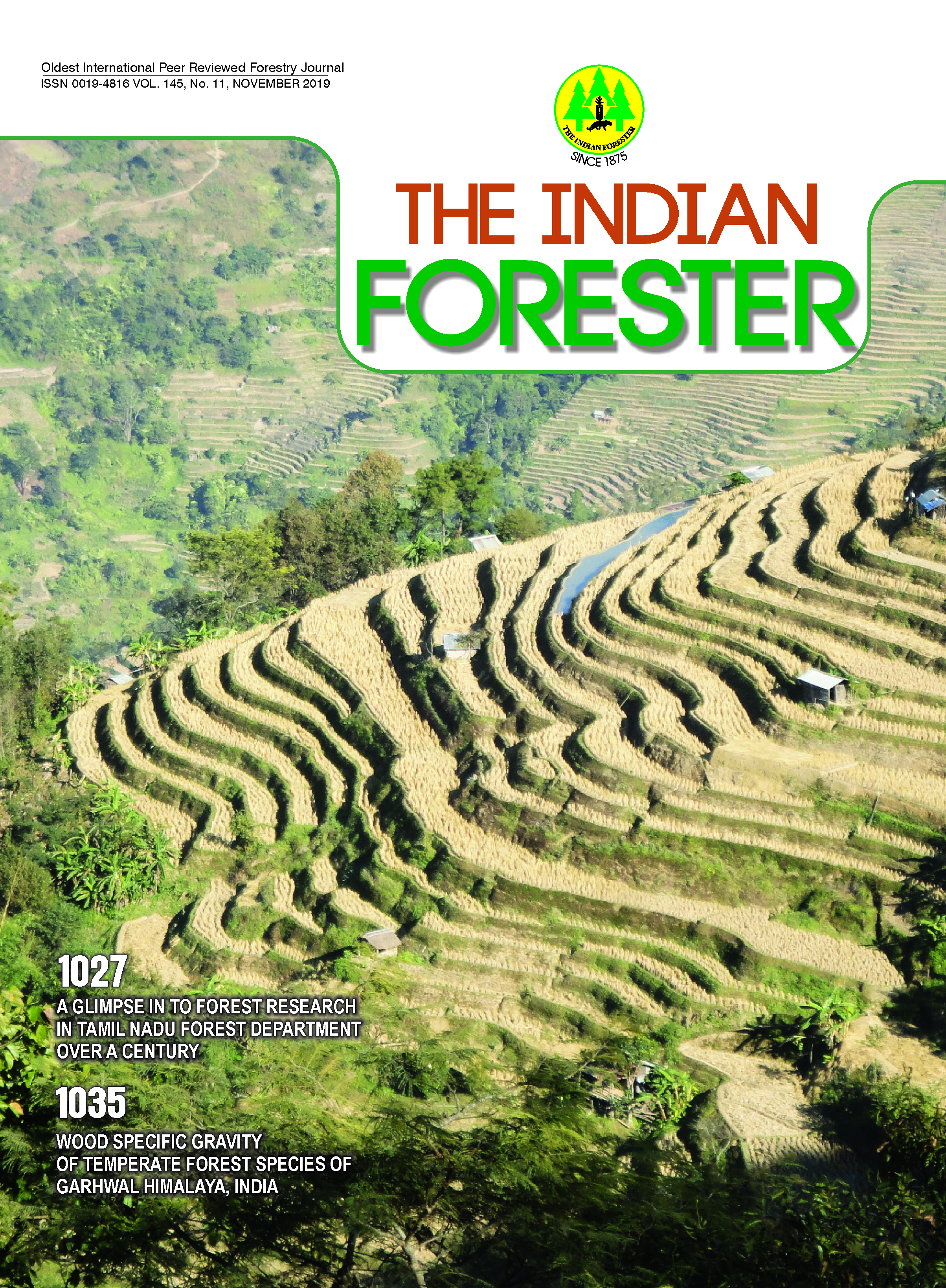Biomass and Carbon stock Assessment of Phanerophytes: A case study of Village Ecosystem used for Ecological Optimization to Mitigate Climate Change
DOI:
https://doi.org/10.36808/if/2019/v145i11/149917Keywords:
Girth At Breast Height (GBH), Phanerophytes, Carbon Sequestration Potential, Village Ecosystem.Abstract
The present communication is based on Carbon sequestration potential of ten selected ligneous species which were predominant in the Rajhat village of Hooghly district. It was observed that Swietenia mahogani has highest carbon sequestration potential whereas Disoxylum costulatum has lowest potential. The correlation between GBH and height with carbon sequestration potential were determined which is positive while summing up it can be said that, the present work exhibit the pathway of aesthetic rejuvenation through landscape designing pledge with environmental optimization through CO2 sequestration with appropriate trees.References
Das M. and Mukherjee A. (2015). Carbon sequestration potential, its correlation with height and girth of selected trees in the Golapbag Campus, Burdwan, West Bengal (India). Indian Journal of Scientific Research, 10(1): 53-57.
Das M., Das M. and Mukherjee A. (2017). Carbon sequestration potential of eight tree species selected from the Golapbag campus of Burdwan university, West Bengal (India). Research Journal of Pharmaceutical, Biological and Chemical Sciences, 8(2): 1901-1908.
Gitay H.; Suarez A.; Watson R T. and Dokken D. J. (2000). Intergovernmental Panel on Climate Change (IPCC).
Hangarge L. M., Kulkarni D. K., Gaikwad V. B., Mahajan D.M. and Chaudhari N. (2012). Carbon sequestration potential of tree species in Somjaichi Rai (Sacred grove) at Nandghur village, in Bhor region of Pune District, Maharashtra State, India. Annals of Biological Research, 3(7): 3426-3429.
Olivier J. G. J., Janssens-Maenhout G., Muntean M., Peters J.A.H.W. Trends in global CO emissions: 2015 Report, PBL 2 Netherlands Environmental Assessment Agency, The Hague, PBL publication number: 1803.
Pandya I. Y., Salvi H., Chahar O. and Vaghela N. (2013). Quantitative Analysis on Carbon storage of 25 valuable tree species of Gujarat, “Incredible Indiaâ€. Indian Journal of Scientific Research 4(1): 137-141.
Pearson T. R. H., Brown S. and Ravindranath N.H. (2005). Integrating carbon benefits estimates into GEF projects, p. 156. UNDP GEF Capacity Development and Adaptation Group Guidelines.
Rathore A. and Jasari Y. T. (2013). Urban green patches as carbon sink: Gujarat University campus, Ahmadabad. Indian Journal of Fundamental and Applied Life Sciences 3(1): 208-213.
Vashum K. T. and Jayakumar S. (2012). Methods to estimate above-ground biomass and carbon stock in natural forests-a review. Journal of Ecosystem & Ecography 2(4): 1-7.
Downloads
Downloads
Published
How to Cite
Issue
Section
License
Unless otherwise stated, copyright or similar rights in all materials presented on the site, including graphical images, are owned by Indian Forester.





